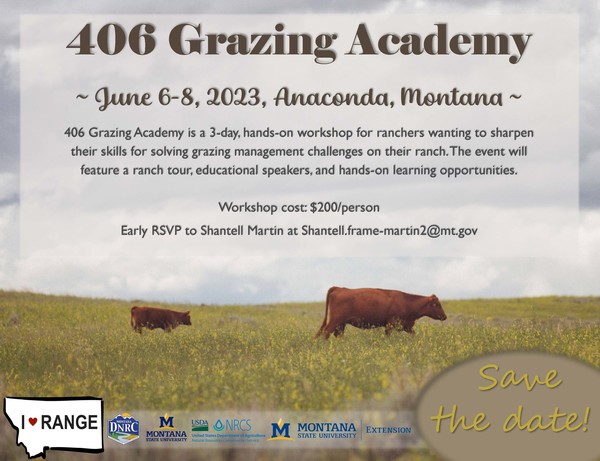
Leopold Conservation Award
seeks 2023 nominees
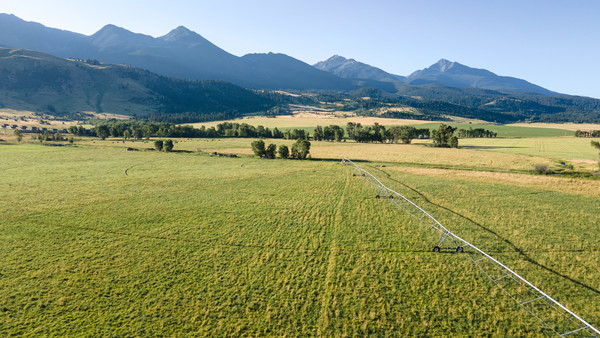 Know a Montana rancher, farmer or forestland owner who goes above and beyond in the stewardship and management of natural resources? Nominate them for the 2023 Montana Leopold Conservation Award®.
Nominations may be submitted on behalf of a landowner, or landowners may nominate themselves. The application deadline is March 15, 2023; applications can be emailed to sbarta@mt.gov or postmarked by March 15, 2023, and mailed to:
Leopold Conservation Award
c/o Rangeland Resources Program Coordinator
Dept. of Natural Resources & Conservation
P.O. Box 414
Clyde Park, MT 59018
Economic outlook briefings coming to Montana
Volatile agricultural markets, inflation, recession and a look at local and statewide economic issues are the focus of the 2023 Economic Briefing series, coming to Eastern Montana in mid-March.
Faculty from the Montana State University Department of Agricultural Economics and Economics will collaborate with economists from the University of Montana Bureau of Business and Economic Research to bring an economic briefing with emphasis on agricultural policy issues and forecasts to Sidney in the morning and Miles City in the afternoon on Tuesday, March 14. Breakfast will be provided at the Sidney event, and lunch will be provided at the Miles City event. The cost of the attendance is $30.
To register or learn more, visit: https://www.economicoutlookseminar.com/
Helmville Ranching Family, MSGA Members Honored with 2022 Regional Environmental Stewardship Award
Article from: Montana Stockgrowers Association Newsletter | Feb. 24, 2023
The Mannix Brothers Ranch, in Helmville, Mont., has been selected as one of seven regional honorees of the Environmental Stewardship Award Program (ESAP). The award, announced during the 2023 Cattle Industry Convention and NBCA Trade Show, recognizes the operation’s outstanding stewardship and conservation efforts. Regional winners will compete for the national award, which will be presented during NCBA’s Legislative Conference in Washington, D.C., April 24-27, 2023. Full article.
Rancher goes to law school to protect family land
Phil Stempin, University of Montana | Feb. 17, 2023
First-year University of Montana law student and sixth-generation rancher Erin Brush grew up at the base of the Tobacco Root mountain range in Norris, Montana. Her decision to pursue a law degree is deeply rooted in her love of agriculture and her drive to protect the land her family has been on for 150 years.
“Our own family was once taken advantage of by a company,” Brush said. “We didn’t have the funds or time to protect ourselves. I wanted to put myself in the position to help people in similar situations.”
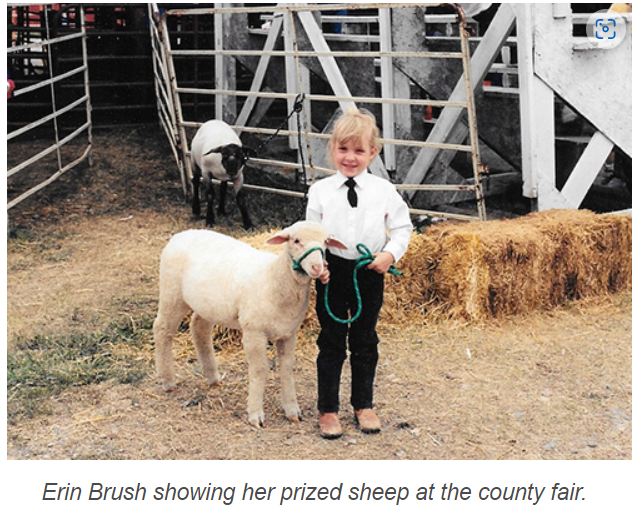 Brush started out in 4-H, eventually becoming a state officer in high school.
“I lived and breathed 4-H,” Brush said about America’s largest youth development organization. “I tried out almost every program they offered. My favorite project was, by far, photography.”
Taking photos became a powerful way for Brush to show others her family’s way of life. She turned the skill into a small business to help support herself while in college.
“I’ve always loved taking pictures to show people what ranching is all about,” said Brush. “Most people have no idea what goes in to producing the food we all depend on. With pictures, you can show them emotion.”
Brush double-majored in agribusiness management and photography from Montana State University in Bozeman. She also picked up a minor in business administration. Read on to learn more about Erin's journey.
 Virtual fencing for grazing cattle:
Lessons learned
Roy Berg, Kinsella Research Ranch, Alberta, International Mountain-Section Society for Range Managment | Feb. 24, 2023
Conventional fencing systems (barbed wire, electric tape, electric wire, etc.) for cattle grazing are expensive and labour intensive, even more so when used for rotational grazing. Virtual fencing is an emerging technology that may serve as an alternative to conventional fencing. This presentation describes a study conducted at the University of Alberta Roy Berg Kinsella Research Ranch that investigated whether virtual fencing could be implemented to manage a rotational grazing system. Click to watch.
USFWS to initiate grizzly bear status review in the Northern Continental Divide and Greater Yellowstone ecosystems
Press Release - United States Fish & Wildlife Service | Feb. 24, 2023
The U.S. Fish and Wildlife Service has completed the initial review of three petitions filed to remove the grizzly bear (Ursus arctos horribilis) in the lower 48 States from the list of endangered and threatened wildlife under the Endangered Species Act in certain ecosystems.
The Service finds two of these petitions present substantial information indicating the grizzly bear in the Northern Continental Divide Ecosystem (NCDE) and the Greater Yellowstone Ecosystem (GYE) may qualify as their own distinct population segment and may warrant removal from the list of endangered and threatened wildlife. The Service will now initiate a comprehensive status review of the grizzly bear in the NCDE and GYE based on the best available scientific and commercial data available to inform a 12-month finding. If those findings result in proposing one or more DPSs for delisting, the Service will consider those in the context of the ongoing recovery for the rest of the population in the larger listed entity. Read the full article here.
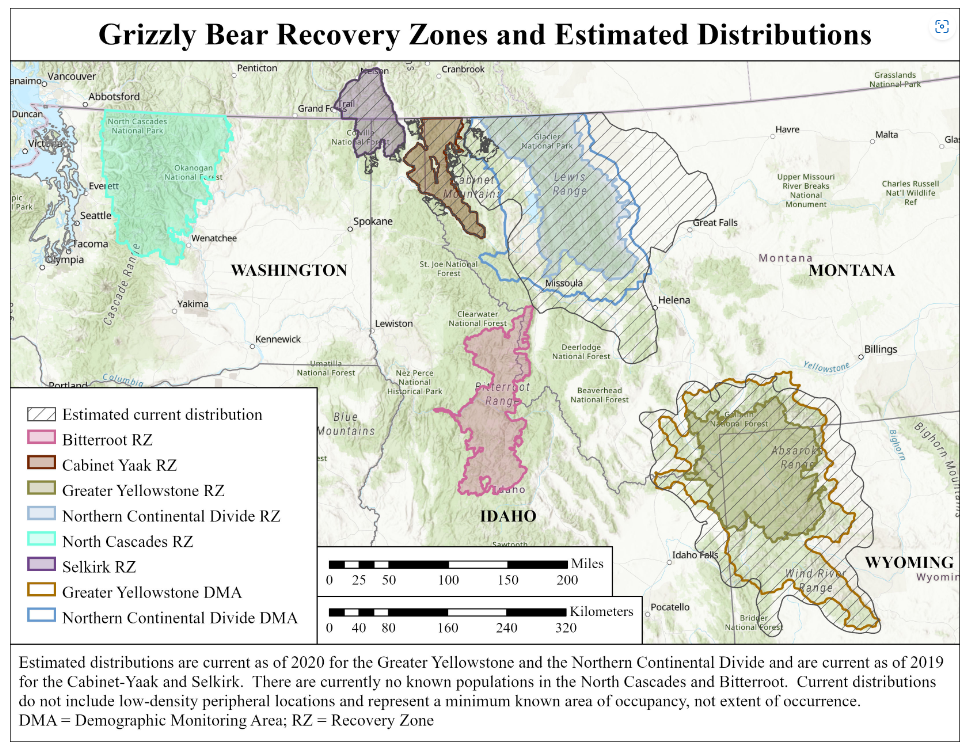
Ventenata Identification, Impacts, and Management Options
Article from: North American Invasive Species Management Association (NAISMA), website | Feb. 24, 2023
To limit additional ventenata (Ventenata dubia) spread into Montana, Montana Department of Agriculture has petitioned NAISMA, North American Invasive Species Management Association, to add this state-listed invasive grass to their North American Designated Noxious Weed list. The goal is to prevent ventenata seed from entering the state, and other states, in forage, seed, or other materials that have been certified weed free. NAISMA will review and decide on the petition in fall 2023, but in the meantime has graciously agreed to partner with MDA on an education campaign, including a webinar on ventenata identification, impacts, and management options by our own Dr. Jane Mangold, an always informative and enjoyable presenter and preeminent non-native annual grass expert. The webinar will reach NAISMA’s large nationwide audience and aims to raise widespread awareness of this noxious weed that we are seeing is so problematic in Montana. The informational webinar is scheduled for April 19th from noon to 1 p.m. Mountain Time. Register here.
Human-Wildlife Interactions, highlights Raven management
Article from: Human-Wildlife Interactions, Berryman Institute website | Feb. 24, 2023
Human–Wildlife Interactions (HWI) is the only scientific journal dedicated specifically to publishing manuscripts that report research, management case studies, and policy perspectives designed to enhance the professional management of human–wildlife conflicts. HWI is an open-access journal published 3 times per year. Click here to access this special edition publication highlighting raven management.
Big Timber FFA Thanks Farmers & Ranchers
To honor those that feed and clothe the world, Big Timber FFA decided to say thank you this National FFA Week 2023. Please enjoy these stories, photos, and videos of agricultural life here in Sweet Grass County. To watch the full video, click here.
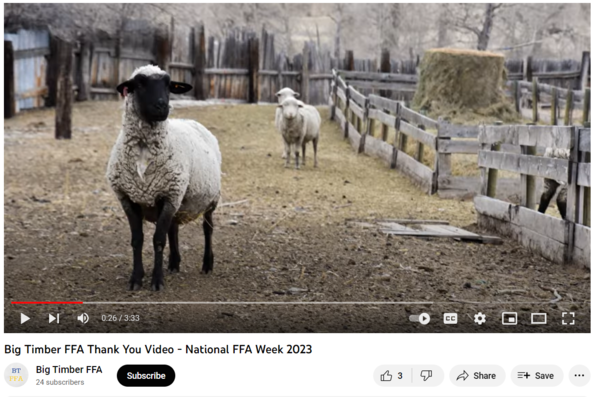
Congress: Lawmakers focus on WOTUS fixes and Farm Bill hearings; CBO expected to revise Farm Bill forecast.
Washington Week Ahead: Farm bill, WOTUS get lawmakers’ focus, Agri-Pulse - The Senate Agriculture Committee will turn its focus to farm bill conservation and forestry programs this week, while House Republicans put the spotlight on the Biden administration’s “waters of the U.S.” rule and other regulatory issues. The Senate Ag hearing on Wednesday comes as four major conservation programs are getting a historic infusion of $18 billion from the Inflation Reduction Act to promote the adoption of climate-related farming practices. The hearing is likely to include questions on the IRA funding and the administration's focus on adapting to climate change and reducing greenhouse gas emissions. Some committee members are expected to press for more flexibility to address local and non-climate concerns. The House Agriculture Committee, now under GOP control for the first time in four years, holds its first official hearing of the year on Tuesday, when the panel will bring in industry groups for a wide-ranging discussion of production costs and farmers’ regulatory concerns. The testimony on input costs could help the committee build a case for raising commodity program reference prices. The regulatory issues that will be aired at the hearing almost certainly will include the WOTUS rule, which is the subject of multiple lawsuits. The hearing witnesses will not be announced until Monday, but the National Chicken Council said its president, Mike Brown, will be included. Elsewhere on the WOTUS front, the House Transportation and Infrastructure Committee will meet Tuesday to move a resolution of disapproval for the rule as part of a largely symbolic effort that could put swing-district Democrats on the spot.
Daybreak Feb. 27: CBO expected to revise farm bill forecast, Agri-Pulse, The Congressional Budget Office plans to issue new estimates of farm bill spending before lawmakers move a new bill later this year, according to a Senate source. That’s important because the updated forecast is almost certain to build in higher estimates of major commodity prices. Raising those price estimates would have the effect of lowering the potential cost of increasing commodity program reference prices. USDA’s latest projections show soybean prices averaging somewhat higher than CBO is currently estimating over the next 10 years. For example, CBO currently expects the average price of soybeans in 2024 will be $10.50 a bushel. That’s well below USDA’s estimate of $11.40. Take note: This source also expects CBO to go along with redistributing Inflation Reduction Act funding in such a way that would raise the funding baseline for future farm bills. If Congress doesn’t do that reallocation, the infusion of IRA funding won’t have any effect on farm bill spending levels after 2031. On the Hill this week: The House Ag Committee has a hearing Tuesday on agricultural production costs and regulatory concerns. The Senate Ag Committee has a hearing Wednesday on farm bill conservation and forestry programs.
 Inaugural Montana Ag Tech Innovation & Investment Summit Sees Success in Great Falls
Individuals representing the various fields of agriculture, technology, capital investment, entrepreneurship and more gathered in Great Falls last month at the inaugural Montana Ag Tech Innovation and Investment Summit. The event was put together by the Montana Department of Agriculture, Montana Agricultural Business Association, and the Montana State University College of Agriculture.
The event saw 100+ attendees that included presenters, panel discussions, networking sessions, and ten teams that had the to chance to present their Ag Tech product or solution in the “Montana Agricultural Speed Pitch Competition” that ended the day.
The Montana Agricultural Speed Pitch Competition was planned to distinguish and provide funding assistance to innovative ideas supporting or contributing to Montana agriculture. Each of the ten selected projects was pitched to those in attendance in a one-minute presentation. Winners were selected by summit participants. The top three projects were awarded funding of $25,000, $15,000, and $10,000, respectively. Click here to read more.
Winter/Spring 2023 Free Range Management Webinar Series
Interested in learning more about habitat selection by commercial beef cattle, invasive species management, control of invasive annual bromegrasses in mixed grass prairies using indaziflam or technology in grazing systems management? Then tune in to the Society for Range Management IMS Winter/Spring 2023 free range management seminars hosted in partnership with Rangeland Research Institute, University of Alberta and Montana State University. To register or view upcoming webinars, click here.
 Elk captured in Pioneer Mountains test negative for brucellosis
Article from: Montana Stockgrowers Association website | Feb. 24, 2023
As part of a multi-year Targeted Elk Brucellosis Surveillance Project, Montana Fish, Wildlife & Parks (FWP) staff recently captured elk in the Pioneer Mountains northwest of Dillon.
All 149 blood samples collected from captured elk tested negative for brucellosis.
Capture operations were conducted in January along the eastern front of the Pioneer Mountains. A few elk were also captured south of Montana Highway 278 east of Bannack. Thirty elk were outfitted with GPS collars that will be active for one year to help wildlife managers better understand their seasonal ranges, migration routes and potential mixing with other elk herds.
The goal of these operations is to evaluate the presence and understand the movement of brucellosis in Montana’s elk populations. The research also helps wildlife managers and animal health officials understand the overlap between elk and livestock on the landscape. Click here to read on.
 |
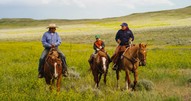
UPDATE: The following depicts updated information for an event that was previously planned for February but has been moved to March. If you purchased tickets and/or sent in an RSVP for the February event, those have been tracked and will be honored. If you’d previously paid but are now unable to attend, we’re happy to issue a refund. Simply call the Ranchers Stewardship Alliance office at (406) 654-1405 or email admin@ranchstewards.org.
https://ranchstewards.org
It’s emotional. It’s financial. It’s pivotal. And it often gets put on the back burner. Data from the U.S. Department of Agriculture National Agricultural Statistics Service reports that family-owned farms and ranches account for 97% of the 2.1 million total in the U.S. Yet only 30% of these survive into the second generation. Only 12% are still operating by the third.
What’s more, some 69% of the family farms surveyed expected ownership to continue into the next generation, but only 23% had a plan. Where is the disconnect? Reluctance to get into hard conversations, uncertainty about what professionals to bring into the mix, worries about fairness, and old-fashioned procrastination are among the list of possibilities.
To help our region’s farm and ranch families break through the noise of estate planning, Perennial Roots, a program of Ranchers Stewardship Alliance and Winnett ACES, and cohost Petroleum County Conservation District will soon be showcasing the firsthand stories of three Montana ranch families. Each will discuss the motivations, trials, and victories in establishing their estate plan:
Mannix Family – Helmville, Montana
A diversified and multigenerational operation, the Mannix family is continuing the 140-year tradition of the Mannix Brothers Ranch. There are plenty of cooks in this 50,000-acre kitchen. Decisions go back to the ranch’s board of directors, which includes brothers of the fourth generation, David, Randy, and Brent, their wives Peggy, Mo, and Stacey, and three representatives of the fifth generation, Neil, Bryan, and Logan.
Lee Family – Judith Gap, Montana
Bob Lee and late wife Kathy started their diversified cattle and grain operation in the foothills of the Snowy Mountains in 1969. The duo raised three successful children, one of which has now brought his family home to the operation. The ranch has been recognized for its approach to managing its natural resources and is well-known for the tours it offers to groups from across the state, nation, and globe.
Hammond Family – Malta, Montana
Howie Hammond is a first-generation producer on property that he and his wife, JoAnn, bought in 1979. The pair enjoys having their three daughters and their families living in Phillips County. Daughter Andrea and husband, Wyatt Lien, have committed to help run the operation. All-in-all, they run a cow/calf operation on roughly 37,000 acres with a portion seeded to small grains. Howie’s commitment to succession planning was inspired by conversations with Nebraska producers in jeopardy of losing their land in the late 80s. The Hammond’s ever-evolving succession plan became a top priority after a medical diagnosis for Howie in late 2014.
The two in-person events will feature presentations from each of the ranches along with evening meals and plenty of time for discussion. Both are stand-alone gatherings. While attendees are more than welcome to attend both, the content will be very similar in each location.
|
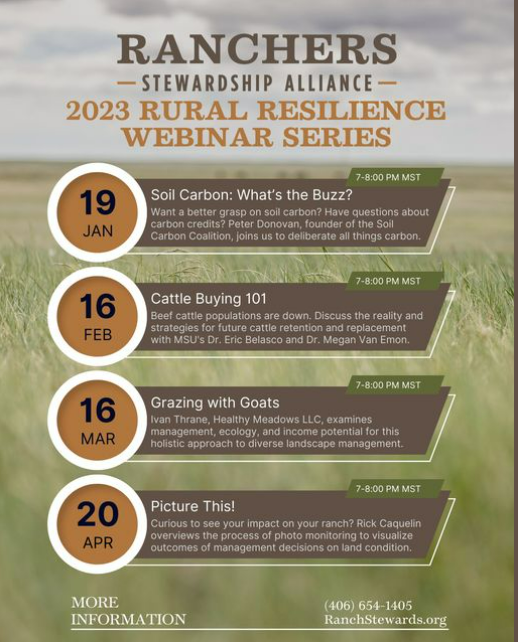 |


 USDA Develops Simplified Direct Loan Application to Improve Customer Service
The U.S. Department of Agriculture (USDA) has developed a simplified direct loan application to provide improved customer experience for producers applying for loans from the Farm Service Agency (FSA). The simplified direct loan application enables producers to complete a more streamlined application, reduced from 29 to 13 pages. Producers will also have the option to complete an electronic fillable form or prepare a traditional, paper application for submission to their local FSA farm loan office. The paper and electronic versions of the form will be available starting March 1, 2023. Read more here.
 Precision Ag Survey
MSU is creating a new Precision Agriculture Program and needs your help! Please help them determine what precision agricultural topics are relevant to Montana agricultural producers by filling out an online survey.
Upcoming Webinars for Recertification Credits
Please use the information provided to register for each event. This list is not comprehensive. Webinars are added as they are sent to the MDA for approval.
Upcoming Onsite Events
Online Credit Opportunities
There are 195 online private applicator credit opportunities available over a broad array of topics. This is a great platform for receiving last minute credits, or for education targeting specialized topics. View the Instructions for Using the MDA Course Locator Tool to learn how to search for online classes.
Recent Publications and News Updates

Landowners have until March 15 to apply for FWP public access to public lands programs
Landowners have until March 15 to submit applications to Montana Fish, Wildlife & Parks for enrollment in the Unlocking Public Lands (UPL) Program or the Public Access Land Agreement (PALA) Program.
These programs are designed to provide recreational public access to state (Montana Department of Natural Resources and Conservation) or federal (Bureau of Land Management or United States Forest Service) land where no or limited legal public access currently exists.
For enrollment in UPL, landowners will receive a tax credit in the amount of $750 per agreement and up to a maximum of $3,000 in tax credits in exchange for allowing access across the private lands, roads or trails to reach inaccessible public land. Landowners must hold the public land lease and decide how the public may cross their private property for all recreations.
For enrollment in PALA, landowners will receive monetary compensation, including possible infrastructure reimbursements (e.g., gravel, culverts, cattle guards, etc.) to facilitate public access to inaccessible public lands. Landowners must hold the public land lease. Compensation amounts vary based on a variety of factors, with one landowner possibly holding multiple agreements. The governor-appointed Private Land/Public Wildlife (PL/PW) Advisory Committee will review complete applications and make a recommendation to the FWP director on whether to extend an agreement.
“Offering a tax credit or payment in exchange for public access to inaccessible public land is a unique and innovative way to respect private property rights and increase public access,” said Jason Kool, FWP hunting access program manager. “We hope these opportunities and incentives appeal to many landowners throughout the state.”
While Montana contains millions of acres of public land, much of this land is inaccessible to the public and requires landowner permission for access.
More information about these two programs, including enrollment criteria, application forms, and fact sheets describing these FWP public access programs, can be found at: fwp.mt.gov/landowner.
|
|
|
|
 USDA Announces Grants for Urban Agriculture and Innovative Production
USDA is making available up to $7.5 million for grants through its Office of Urban Agriculture and Innovative Production (OUAIP). The competitive grants will support the development of urban agriculture and innovative production projects through two categories, Planning Projects and Implementation Projects. Learn more.
Apply by March 27, 2023
The last week of December, DNRC's website migrated to a new platform. The new link is listed below, please be patient as we work through the bugs and hopefully, we will have a much better and more fluid website.
Reframing Rural – Farm Succession in Northeast Montana
In this guest episode from Reframing Rural's third season, producer Megan Torgerson shares the intimate journey of her family’s farm succession, as well as others in her home community of Dagmar, Montana, giving listeners an inside look into the emotional, legal and financial factors at play with succession planning. Click here to listen.
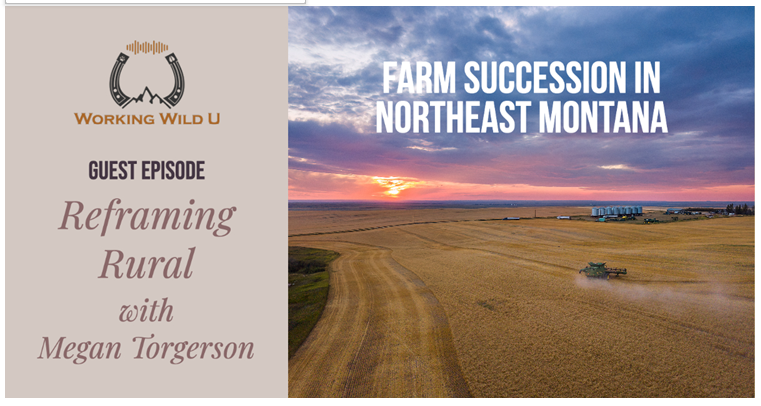
Montana State University:
Animal & Range Science
MSU Extension:
Updated MontGuides
University of Montana:
Rangeland Analysis Platform
Reversing Tree Encroachment Increases Usable Space for Sage-Grouse during the Breeding Season
USDA-Agricultural Research Service
Scientific Discoveries 2022
Rangeland Resources & Systems Research, Fort Collins, CO:
Livestock and Range Research Laboratory, Miles City, MT:
Pest Management Research, Sidney, MT:
USDA- Wildlife Services:
US Forest Service Research & Development:
Research topic: Fire
Research topic: Water, Air, & Soil
March
April
June
- 6-8 - 406 Grazing Academy (Anaconda, MT)
Details TBA
- 13-15 - Montana Stockgrowers MidYear Meeting (Havre)
Details TBA
July
- 6 - Montana Range Tour- Featuring Barney Creek Livestock (Livingston, MT)
Details TBA
Stacey Barta, State Coordinator for Rangelands
(406) 594-8481
Shantell Martin, Program Specialist
406-531-4584
Rangeland Resources Committee:
Diane Ahlgren, Chair
John Hollenback, Vice Chair
Sigurd Jensen
Jim Anderson
Leah Lewis
Ron Devlin
|